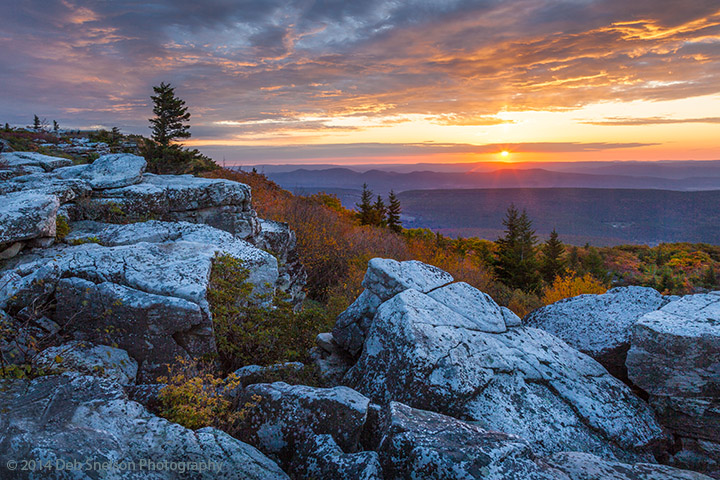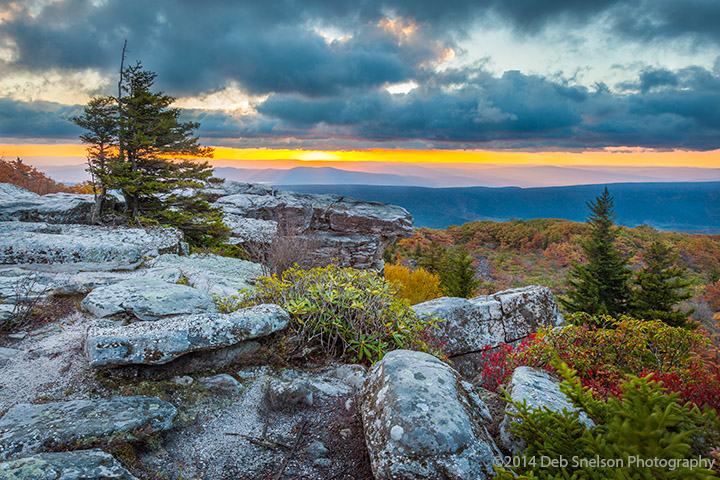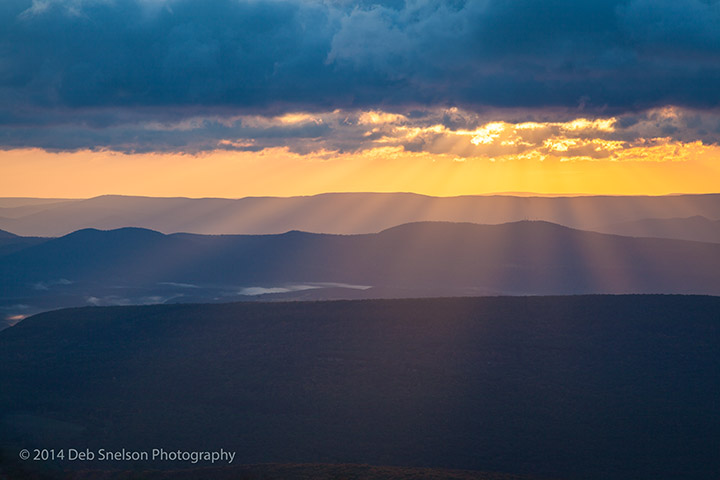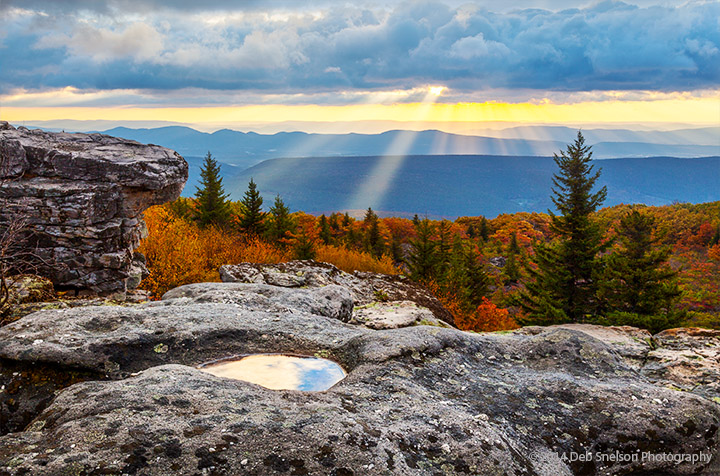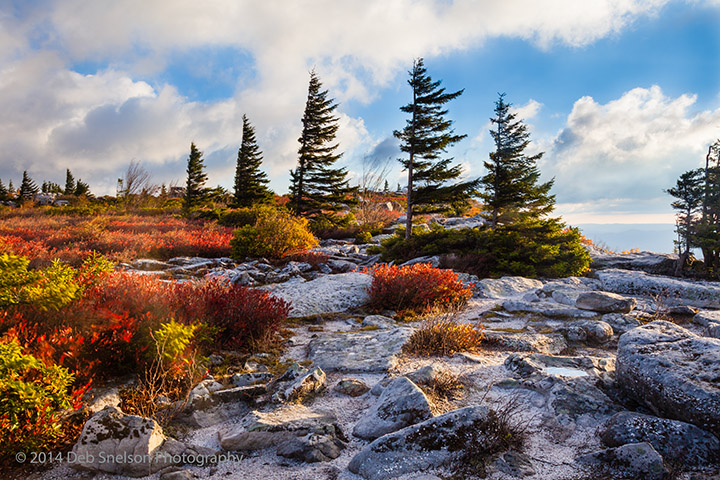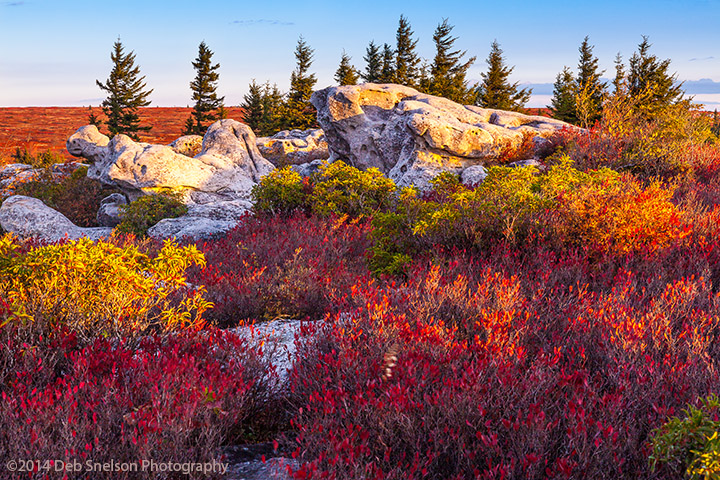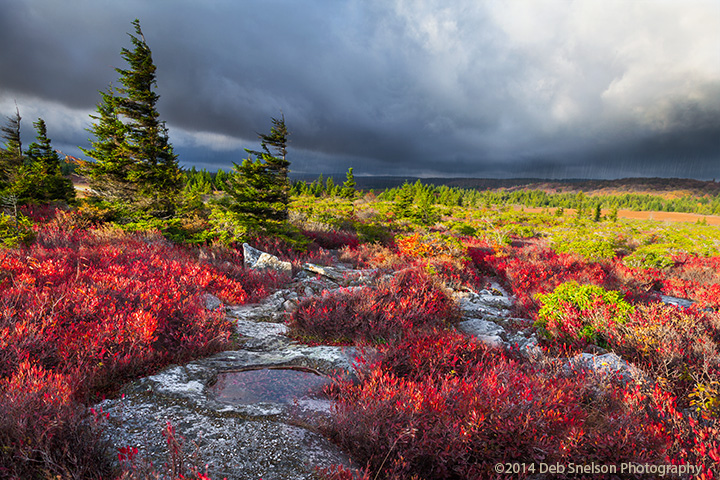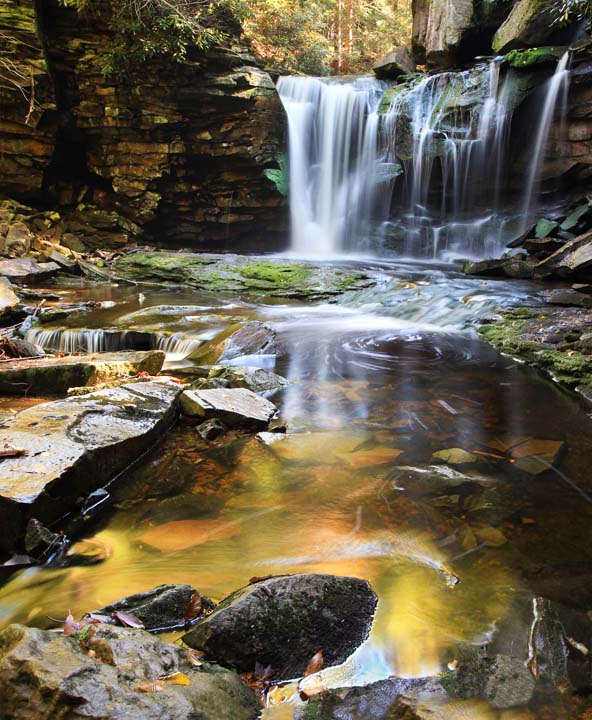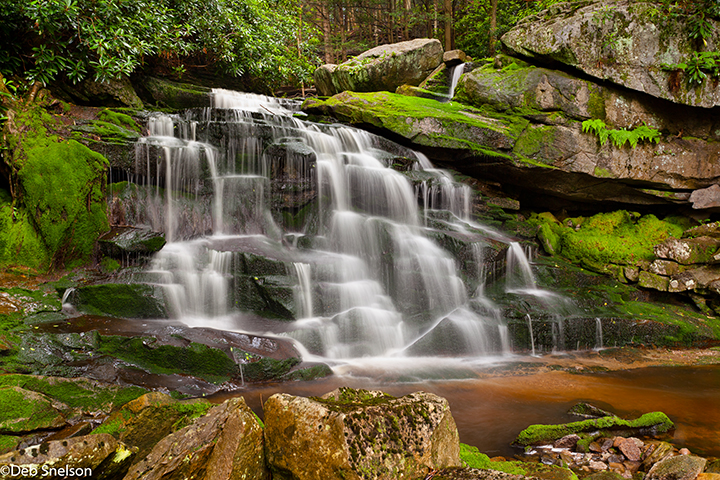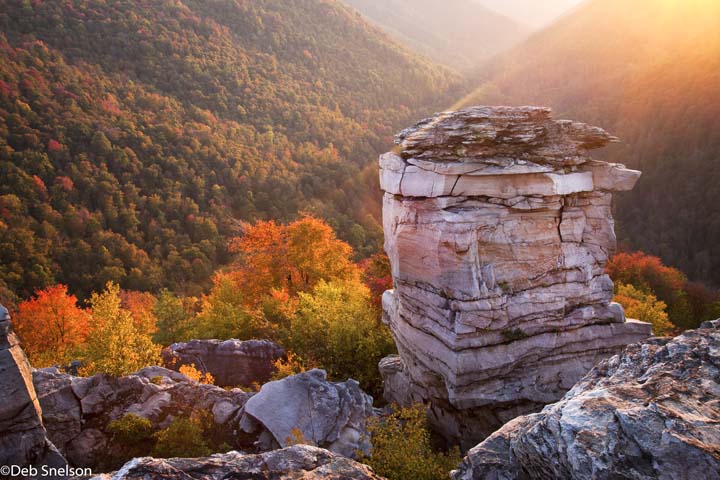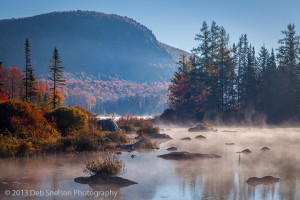One of my favorite places to photograph that is not too far from home is the Canaan Valley and surrounding areas of West Virginia, and especially the Dolly Sods Wilderness Area. With a stop north of Charlottesville to leave my dog in good hands, the drive per google maps is 4 hours 45 minutes – not exactly a day trip. Yet I have returned multiple times to photograph the stunning landscape.
So many times I’ve traveled distances to get to iconic spots, and for the most part I am challenged to make the most with the weather I’m given at any location. For example, on my three-week solo drive to and around Nova Scotia, I had made reservations at various B&Bs on the route I was driving. The weather did not cooperate, and most days I awoke to rain and drizzle with no hope of getting a sunrise image. Because I had an itinerary, I had to move on to my next location. Keep in mind that good weather for a photographer is not sunny with a clear blue sky. We prefer cloud filled skies with just a sliver of sun at the horizon, fog laying in valleys, and storms approaching or leaving. But a sunrise image still requires a sun!
Last Fall, on my seventh visit to the Bear Rocks of Dolly Sods, I felt a euphoria, and began to make the kind of images that I want to create, just one after the other. I would compare this feeling to a runner’s high, a feeling of working to my maximum potential and feeling my vision. This visit almost didn’t happen – waking up at 5AM and looking out the window into darkness, there were no stars, a signal that sunrise may not be visible through the heavy cloud cover. But I got ready and drove the 50 minutes over a narrow winding dirt road to the top of the plateau in the dark. Sometimes it is better not to be able to see the soft cliff edges along the road. After picking my way through the boulders, around blueberry bushes in autumn red, and jumping crevasses in the rock, I reached the edge looking towards the layers of Allegheny Mountains and was rewarded with that sliver of sun under cloud cover electrified with gold rays cutting through the waning blues of twilight.
As I repositioned my tripod, the sun rose higher and became obscured behind the clouds, but the most intense golden color beams shot out from under those clouds, making for many opportunities to capture those beams.
When the sunrise was no longer interesting, I turned to photograph the unique landscape of the rock and blueberry shrub barren on the Continental Divide, or Allegheny Front. During the Appalachian Orogeny the 300 million year old sedimentary rocks were pushed up to form peaks similar in height to the Rockies, but have since eroded away a layer about 2 miles thick. Soils develop from the jumbled blocks of conglomeritic sandstones very slowly, are very coarse and thin, very acidic, and low in nutrient value. Plants here have adapted to the very poor growing conditions. The boreal plant life and climate on this high plateau resemble northern Canada, with a short growing season. Red spruce and northern hardwoods here are much shorter than those seen at lower elevations because of the thin, nutrient poor soils and harsh climate.
The trees show the direction of prevailing winds, and the low angle of the sun lit up the burning-red autumn foliage of the blueberry bushes.
Before I left the plateau the skies darkened with an approaching storm, and I positioned myself to show the storm front while the sun was still lighting the blueberry foliage – this is probably my favorite image from all my visits to the area:
Whereas on my first visit to Dolly Sods I did not catch the best light, I did make my favorite images at Elakala Falls and at Lindy Point, both of which are in Blackwater Falls State Park. I’ve been back to both locations multiple times, but I think I have been influenced by my feeling that the first photos were the best photos, and I have not succeeded in topping those images.
Whoever thought that photographers just step out of their cars and snap good images has not walked in our shoes. Sure, you can shoot Elakala Falls through foliage from a trail, but depending upon the foliage you may not see much of the waterfall. Instead you must slip and slide down a steep bank around trees and through brush. On my first trip I had no idea of the best way down, and I must have picked the longest route, fell twice coating my pants in mud, but kept going. When at the falls I dared to walk over algae-slimed rocks to get a perspective that reflected the autumn foliage color in the water. That visit in 2011 I was there alone; subsequent visits I’ve seen the number of people at the base of the falls increase dramatically, and this last time visitors were playing in the splash pool making photography more difficult.
Further down the canyon is the second of four falls on Shays Run as it descends into Blackwater Canyon.
Lindy Point is a popular location for sunset for photographers and visitors. Located where the road drops from two-way traffic to one gravel lane only, there are only FOUR parking spaces. A short hike down to the edge of Blackwater Canyon, there is a platform for viewing the canyon and Monongahela National Forest that in Autumn puts on a stunning display. Photographers prefer a short hop over a rock crevasse onto the rocky outcrop to position themselves behind or alongside a large rock hoodoo. It is not possible to comprehend the scale of this stacked-stone hoodoo in a photo, but it is huge! It is difficult to get a good photo into the canyon while shooting into the sun, but I positioned my camera to eliminate the sky while catching the sun’s flare, with a beam of light pointing towards the brilliant-colored foliage.
There are other opportunities for photos in the area, and I have a few additional photos in my West Virginia Highlands gallery

